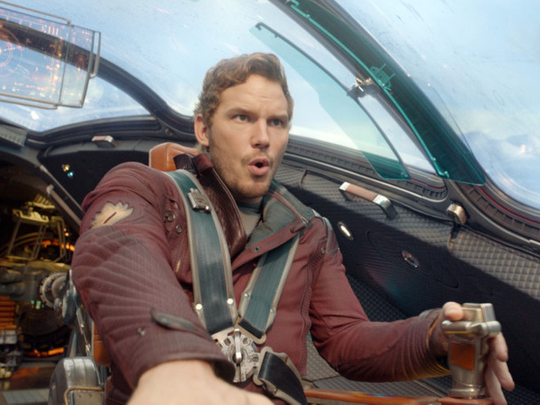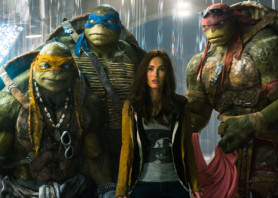
Godzilla couldn’t do it. Spidey couldn’t do it. Tom Cruise couldn’t do it. In the end, history may show that it took the combined forces of a gun-toting space raccoon, a talking tree and four crime-fighting turtles to finally break Hollywood’s Great Summer Slump of 2014.
Since early May, the box office news has been almost unremittingly grim, and entering this month overall domestic grosses for the year were running a whopping 20 per cent behind last year. On studio lots across Los Angeles, hands were being wrung and sweat was being mopped from brows.
Now, following the impressive debuts of Marvel’s Guardians of the Galaxy and perhaps even more surprisingly Paramount’s Teenage Mutant Ninja Turtles, there’s a sense, or at least a hope, that Hollywood may finally be getting its mojo back. Guardians marked the highest-ever opening for an August release with $94 million (Dh345 million), while Turtles cowabunga-ed expectations by pulling in $65 million in its first weekend.
With these back-to-back hits — which follow on the heels of strong performances for the simian sequel Dawn of the Planet of the Apes and the Scarlett Johansson action film Lucy — Hollywood seems to be pulling out of its protracted tailspin. In the last two weeks, the year-to-year deficit has been cut from 20 per cent back to 16.5 per cent, hardly cause for a ticker-tape parade but certainly a step in the right direction.
“When people go to the movies, they go to more movies, so it’s important that a lot of movies work,” said Megan Colligan, Paramount’s president of domestic marketing and distribution. “It’s a good thing for the business.”
The fact that Hollywood has seen a sudden uptick in the box office during August comes as a surprise. The month has long had a reputation as a kind of cinematic island of misfit toys stranded between the shiny blockbusters of the earlier summer and the prestigious awards bait of the autumn. For film lovers, it can feel, along with the pre-Oscar doldrums of January, like a wasteland.
Conventional thinking has long held that August is generally a slow time for movie-going: Children are at camp; families are off on trips; parents are minding household budgets in anticipation of back-to-school shopping; and audiences as a whole are fatigued from all of the tent-pole spectacules of May, June, and July. What better time, then, for Hollywood to quietly dispose of some of its nuclear run-off?
‘Prime month’
But in recent years that prevailing wisdom — which may never have made a ton of sense to begin with (for one thing, America isn’t France, where everyone goes on vacation simultaneously) — has started to fade. The past few years have seen August releases such as Inglorious Basterds, Lee Daniels’ The Butler, Rise of the Planet of the Apes, and The Help break out and succeed critically and commercially.
This August is likely to accelerate the process. Whereas from 2008 to 2013, no August release opened above $55 million, so far this month two films have broken $65 million in their first weekends.
“August is no longer the loss leader,” said Paul Dergarabedian, senior media analyst for the entertainment data firm Rentrak. “It’s becoming a prime month to release movies and a new land of opportunity for films to perform at the box office.”
Looking ahead, the rest of August promises a wide mix of films, including bigger movies like Sin City: A Dame to Kill For, the action sequel The Expendables 3 and the YA adaptations The Giver and If I Stay along with smaller, more adult-oriented fare like The Trip to Italy, Calvary, and Love Is Strange, a few of which have already earned some critical appreciation.
The fact is, as the tentpole business — which used to be solely the province of summer and the holiday season — increasingly becomes a year-round endeavour, outmoded ways of looking at release scheduling are crumbling quickly. The two biggest films of 2014 so far — Captain America: The Winter Soldier and The Lego Movie — opened in April and February, respectively, and Warner Bros recently announced it is shifting the release of its superhero mash-up Batman v. Superman: Dawn of Justice from May 2016 to March of that year.
With today’s digitally savvy audiences demanding to see what they want, when and where they want it, we’re guaranteed to see plenty more experimentation with release strategies as studios try to keep up with rapid changes across the entertainment landscape.
Of course, as long as there are movies, there will be lousy ones — and as long as that’s the case, Hollywood will continue to look for the best, or least lousy, place to stick them. Timing film releases has always been an imperfect science at best, but it ultimately boils down to this: As Tom Ortenberg, CEO of Open Road Films, told me some years ago, “There is never a bad time to release a good film — and there is never a good time to release a bad film.”












